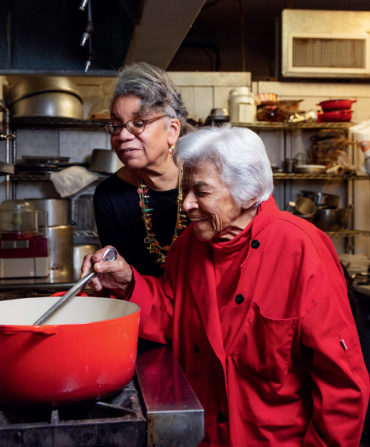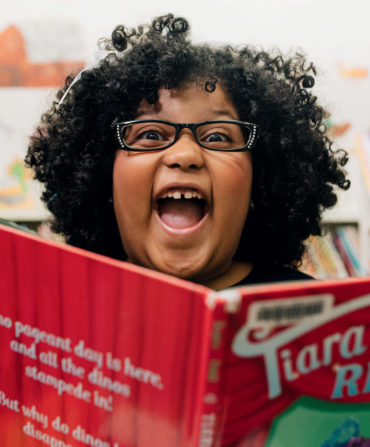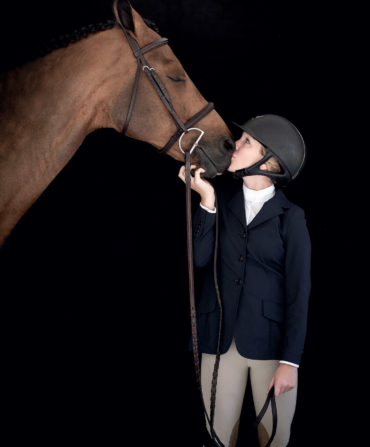Some little girls want dolls or pretty clothes. Minnie Lou Bradley wanted a book on livestock judging—so she cleaned chicken roosts till she’d earned enough money to buy it. By nine years old, she was showing lambs; at thirteen, she got her first Angus cow. Ranching is a male-dominated field, but Bradley had such a knack for livestock that people couldn’t help but take notice. She became the first woman to major in animal husbandry at Oklahoma State University (then Oklahoma A&M) and, later, the first female president of the American Angus Association and an award-winning ambassador for the Certified Angus Beef brand. She’s been called a trailblazer and a pioneer—terms she brushes aside. “If it’s what I want to do, I’m gonna do it,” she says.
With help from her father-in-law, Bradley and her husband, Bill, started the Bradley 3 Ranch in the Texas Panhandle in 1955. Today, she supports her daughter, Mary Lou, and son-in-law, James, as they run the 10,000-plus-acre spread. And though Bradley no longer rides through the pastures in the wee hours or “pulls calves,” she has no intention of leaving ranch life anytime soon. “Everybody asks me, ‘You’re still living on the ranch?’” she says. “Somebody’s gonna have to carry me from upstairs to downstairs one of these days and that’s gonna be it.”
When did you decide you wanted to work in animal husbandry?
All I can tell you is that I think you’re born with some of it. I had an uncle who was still in high school and was in Future Farmers of America. These boys would go out to one farm or the other to look at the projects, and my uncle took me with him. We moved to the country when I was about nine. I read where they had a junior livestock show in Oklahoma City, and my granddad said, “Here’s a thousand head of lamb. You pick out the ten you want, and we’ll go to this show.” I won with that count of ten, and the race was on.
Whom did you look up to?
When you look back, you really appreciate a lot of people that you didn’t at that time. My first animal science class, I walked up to the professor, who I knew was the coach for the judging team, and I said, “Sir, I’m going to be on your judging team.”
When it came time—I knew I should go to Denver [for a judging contest, where students are scored on their ability to evaluate and rank groups of livestock]. But my name wasn’t on the list. My heart was broken. The coach called me into his office and he said, “You know you deserve to go—but we’ve all talked about it, and they’re not used to any girls.” I was hurt. Two weeks later, he called me in and said, “We can’t find anything in the books that says you can travel with six young men and a coach. But we don’t see anything that says you can’t.”
So you went to the next contest, in Fort Worth?
We got out to the show grounds and here came the head of the department—and he was one of those who would scare the bediddling out of you. He said, “You are the first girl to ever represent Oklahoma A&M on the judging team. You will be the last if you don’t come through today.”
No pressure.
I did okay, and from then on, he was my friend. I had a couple of really great days at the right places. We came out of Chicago and I felt pretty good—and of course, that’s the biggie.
That was when, at twenty years old, you won the International Intercollegiate Livestock Judging Contest?
Oh, my kingdom—it made headlines everywhere. It was a great experience. It is what has bounced me into the rest of my life.

Ford Yates
What is the biggest challenge you faced?
I guess you’re getting around to the fact I went into a man’s world. But I just never gave it a thought. I would earn my way in. When I asked them, “If I am good enough, can I be a part of this?”—they were all men, and every one of them said, “If you’re good enough.” And that’s the way it’s been.
How have things changed for women in ranching since you started?
The men were raised to be outside with the cattle and the women to be in, knitting and sewing. Today, it’s unbelievable, the number of women that own land.
In 2006, you were inducted into the National Cowgirl Hall of Fame.
That was a real surprise. I knew who’d been inducted before me, and the ranchers and cattle girls weren’t like me at all—or I wasn’t like them. I never had a fancy pair of boots or fancy anything. And all those ladies had done so much.
What advice would you give to a woman starting her career in ranching?
You have to have a passion for work. Be honest with everybody, including yourself. Integrity is the most important thing, and if you lose that, you’ve lost everything. I was raised to believe there wasn’t anything greater than people trusting you.
What’s your favorite part of the life you’ve built?
I always said I’ll never have a very big ranch. I just want it to be the best, as far as improving the grass, the environment, the water, the wildlife, and have the best cattle running on it we possibly can. That was my dream. I’ll never realize that dream, because I keep reaching out for more.
I sit out on my front porch and I can see for twenty miles in either direction—can’t see a human being. Just wildlife and cattle. I get to thinking, How can there be strife in the world when it’s so quiet and peaceful out here?
Read more from our August/September 2018 Southern Women issue








